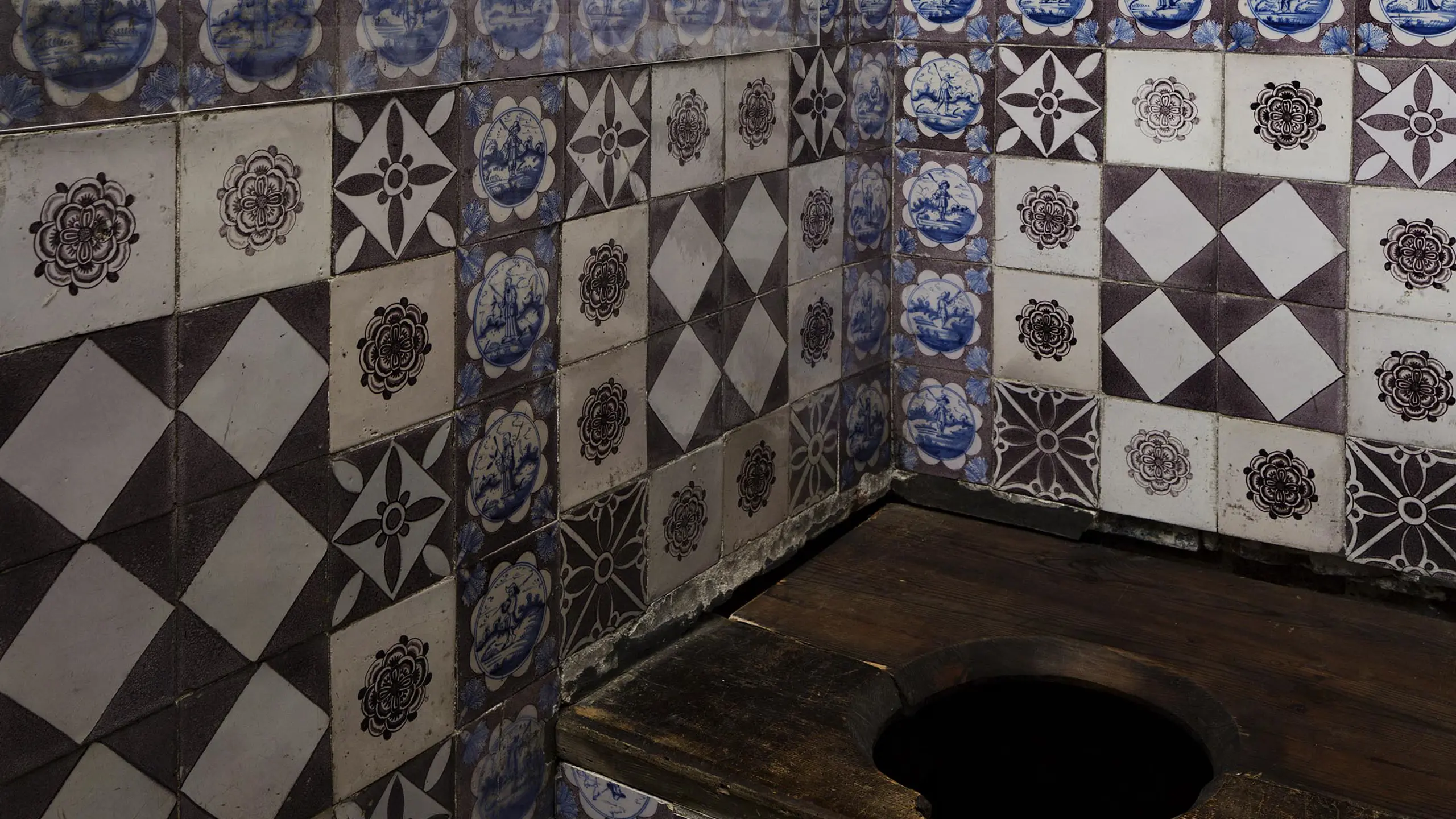Christian IV’s Toilet (room 3A)
This was originally Christian IV's private toilet – known as 'the secret' at the time. There were two other toilets on the upper floors. Each had its own chute. Originally, a door in the wall led into the adjacent bathroom.

The function and design of the toilet
To use the toilet, you flushed using water from a tub in the room. The contents drained directly into the moat around the castle. During dry summer periods, when the water level in the moat was low, the stench from the moat was foul. Even so, it was not as bad as the stench in central Copenhagen, where people emptied their chamber pots into the open gutter.
The stucco ceiling in the lavatory dates from the time of Christian IV and was probably created by Valentin Dresler. The blue-and-white tiles on the walls were added when Frederik IV had Rosenborg renovated, in 1705. The tiles were Dutch and were delivered in 1706. Many of the original tiles are still on the walls. During the 19th century, the tiles appear to have been supplemented with tiles that were made in 1736 for the Hermitage Palace at a factory in Store Kongensgade in central Copenhagen.
One of the tiles has gone in the wrong way
When Frederik IV had Rosenborg Castle renovated, it was common practice to include a mistake as a concrete acknowledgement that only God was infallible. Can you spot the tile that gone in the wrong way?
Objects in the room
If you are at the museum, you can admire the unique objects in the room and read more about them below.
Please note that these descriptions are brief and usually without images. They serve as an added resource if you would like more detailed information about an item, such as who made it, its origin and its meaning.